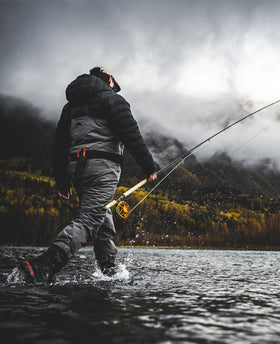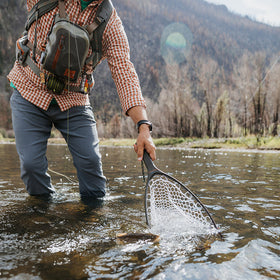
3 Flies for the Week: December 11
Hey look at that, we’re actually going to have stable weather conditions this week. Stable conditions mean stable fishing and we like that! No more having to time temperature spikes! Unfortunately, it’s still midge season and it won’t be going away. The obvious outlier is Pueblo, which has been and will continue to have ample BWO hatches on a daily basis. I actually fished Pueblo last week and it did great, fish were happily eating BWOs and midges in that 22-24 range. The only issue down there is the enormous amount of pressure it’s been receiving lately, so if you’re looking to “get away” from the crowds don’t go to Pueblo. Although, fishing bugs other than midges is pretty nice. Our other tailwaters have been seeing a lot less pressure due to the great conditions down south, so fishing Deckers, Cheesman, 11 Mile, or the Dream will ironically be a better option. Eggs and midges have been the main choice as of late, but a tiny stone is never a bad idea either. Enough of my gibber gabber though, let’s talk about some flies for this week.

With the decent weather this week, expect the dry fly fishing to be a little more consistent for the midges than it has been lately. I always find great midge dry fly activity when the weather isn’t too warm, nor is it too cold. Although midges don’t bring up every fish to the surface like a mayfly would, there’s likely to be a fair amount of fish rising. The griffith’s gnat is an all time classic midge dry fly and, in my opinion, is the best one still available to this day. This fly doubles great as a single midge on the surface, as well as a cluster of midges. Ride it high on the surface, or let it barely sink into the film. This fly mimics a natural perfectly and no other can do it as well as the griffith’s. We find that the sz20 is perfect because it’s not too big or too small. In this size, we notice it does a better job of resembling a midge cluster, but still can imitate a larger single adult.
#2: Mighty Midge - Blue sz20 (In Store Only)

The mighty midge isn’t a fly that we typically have on our rig, which is the exact reason why we’re recommending it for this week. Unfortunately, this time of the year we’re stuck to predominantly fishing tailwaters which means a lot of fish are seeing a lot of rigs. This means that fish can key into certain patterns and avoid them, or at least be hesitant to eat those patterns. One thing I really like to do is mix up my midge patterns here and there to provide a different presentation they’re not used to seeing. This doesn’t always work, but a lot of the time I find it to work when the “normal stuff” just isn’t providing. This fly is a very natural imitation, aside from the bright blue flashy thorax. Don’t let this deter you from fishing it, I find that the flash is just enough to pull fish in without making them spook from it. Plus, if you’ve never fished blue, you should. I mentioned last week that purple is a fantastic color because it’s the most visible color on a trout’s color spectrum. Blue is on a similar scale as purple, and because of that it gets picked up just about as often as purple. If you don’t believe me there’s a ton of information and studies pertaining to trout and their color preferences. Anyways, we highly recommend trying the mighty midge for those fussy tailwater fish this winter (pro tip: many of us in the shop love it on the Taylor).
#3: Jig Mop Fly - Cream sz12 3.3mm

Another weird one, I know, I know, you don’t have to tell me. I’d like to preface by saying that this fly is an absolute boom or bust fly. You won’t be able to keep fish off of it or you won’t be able to buy an eat to save your life. The heavy tungsten bead in this fly allows for it to plummet down to the bottom without using any split shot, which is a huge advantage. I’ve mentioned in weeks past that split shot makes a distinct splat on the water that often spooks fish. When fishing weighted flies, a splat like the split shot just doesn't happen which prevents spooked fish. On top of its weight, it actually does a great job of matching our local bugs! Mop flies in the appropriate color do a great job of imitating the cranefly larvae that are everywhere in the front range rivers. So yes, the mop CAN imitate something, in reality though it’s just a dumb attractor pattern that fish just like to eat. I’ve personally tied some to try to imitate cranefly larvae, but I’ve had the most success with just the drab colors that look like nothing. I really don’t know why fish like to eat the mop fly and if I had a real explanation for you I’d let you know. But I don’t, so all I have to say is just fish it in the deep, slow pools and runs and be ready! Additional tip, if you euro nymph this is an excellent anchor fly due to heavy bead and the mop material becoming very water-logged that slows down your presentation. A slow presentation during the winter months on a euro rig is key, even when fishing faster waters.
Best of luck on the water this week and we hope these flies catch a fish or two for ya. Two of the three flies are available on our website, but all are in the shop. If you have any questions or concerns, feel free to reach out to Xavier on email at xavier@goldenflyshop.com, or call the shop at 303-330-1292. Thank you!






Comments
Leave a comment